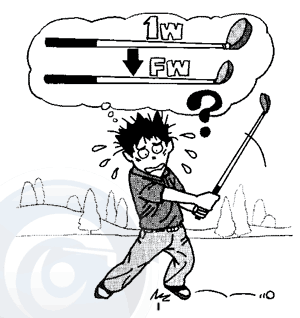 Related posts:
Related posts:
As the Swing Changes… so do the clubs – Part 1
The Heavier and stiffer club setup – Update Part 2
The dreaded Driver…
Many of us dream of hitting our driver long and straight consistently but the truth is that for many of us, hitting a driver is our worst nightmare. The driver is the first club you use on most holes and it can either put you in a great position and allow for easier approaches and better scores. It can also put you off the course or in difficult situations forcing you to make impossible shots meaning lost strokes. The driver is the make or break club for many inconsistent average golfers and without a doubt as a fellow average golfer I go through the same struggles. One round my driver is great and I can’t miss a fairway and the next round I’m all over the place. A lot of us fall back on our fairway woods for teeing off when we struggle with our driver its not uncommon to see many players hit their 3 wood as far as their driver simply because they can make better impact with the FW.
Most of today’s large head drivers are supposed to be super forgiving and easy to hit but the truth is many players cannot create optimal smash factor with a driver and the most difficult question to answer is why? As part of my write ups on changing over to heavier and stiffer clubs to stabilize my swing and to create optimal impact and smash factor, I’m going to look at two club options that I think can help overcome or at least minimize my inconsistent driver woes. Keep in mind that these scenarios are reflective of my game and swing and may not necessarily work for everyone. We all have different swings and this series I’m writing only shows how making changes and finding the right clubs that suit my swing can improve not only stability and accuracy but ultimately overall distance as well by creating better impact. By writing these posts it hopefully makes people think about their own swing and realize that simply grabbing a driver and choosing a flex off the shelf isn’t always optimal.
So many long and light drivers these days…
So back to the question why many average golfers struggle with making good square contact with the driver. In my case its usually playing with a driver with a length too long making it harder to square up and turn over. Longer clubs are very easy to fall into that outside in swing path as well. When we are not hitting the driver with good results, not only do we lose confidence we begin to over think and over adjust and I know this certainly happens for me. A bad push suddenly becomes a terrible hook and vice versa as we try and overcome our bad shots. Many of us also swing harder and more aggressively than we think we do which is very common for an average golfer wanting more distance. Rushing and over swinging only results in poor contact and poor swing form and honestly I feel this is only compounded when a club is far too light which is why I started looking at heavier clubs. Finally another issue many average golfers deal with is too much spin especially with a down blow on the ball creating a trajectory too high ending up in lost distance. Many of the new drivers today designed for average golfers are much longer ie 46.5″ (or even more!) and lighter than ever at under 270g. While this can certainly work for consistent and smooth swingers, those inconsistent players and more aggressive swingers can lose rather than gain distance.
It’s not only about flex…
This is another reason why its difficult for golfers to simply base their shaft and club choices on flex. There are no standards for flex between brands and manufacturers and no exact correlation between swing speed and flex. You can have two players both swing 95 mph and one use a regular flex with success and the other a stiff and what it comes down to is their swing style including tempo, type of transition and even other factors like wrist cock, lag and amount of body turn. This is why fitting is not easy and it really helps for each individual to have some idea of their actual swing. When I’m helping a customer I put more weight on what their driver distance is and their tempo and transition rather than the swing speed they tell me they have. Too many times have I had a customer tell me he swings 90-95mph and drives the ball 285 yards.
It’s about finding the right flex, weight and length to match your swing style. When I shafted up the 1st generation 17* egg Spoon with a 70g range Rombax 7V05 at 276cpm and 324g I never imagined I would be able to hit the egg as far as I used too with lighter softer shafts but instead I hit it better than ever. Besides coming very close to my usual driver distance, I also stayed in range of my playing partners who began proclaiming I had no need for a driver as long as I had the Spoon. That got me thinking again about a shorter and heavier driver. I began to wonder if I could create the same solid impact with a shorter heavier driver as I could a short and heavy fairway wood. Golf is all about making the best impact and creating optimal smash factor. It doesn’t matter how fast you swing or how great your clubs are if you can’t strike the ball well and consistently. Am I more consistent with the Spoon off the tee than a driver? Probably. Do I make better impact with an FW off the tee than a driver? Certainly seems like it.

Drivers these days have larger heads, larger sweet spots and deeper and lower CG than creating larger MOI than most clubs of the past. But as I noted drivers have also gotten lighter and longer than ever and for me, I can’t swing these clubs consistently. I’ve always found I can hit a driver at 45″ or shorter much more consistently than anything longer. So I decided to not only experiment with a shorter driver, but also heavier and stiffer. Many Japanese magazines recommend lighter weights for average golfers and slower swingers to help increase swing speeds and because of this typical average golfer 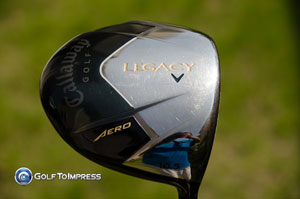 models these days all fall below the 300g range many dropping even below 290 and even 280g when it comes to static weight. I stuck a Tour AD EV-6 Stiff into a Callaway Legacy Aero which is a great forged driver from Endo. I finished the driver at 44.5″ and 311g with a D0 swing weight.
models these days all fall below the 300g range many dropping even below 290 and even 280g when it comes to static weight. I stuck a Tour AD EV-6 Stiff into a Callaway Legacy Aero which is a great forged driver from Endo. I finished the driver at 44.5″ and 311g with a D0 swing weight.
Swing Weight… high or low?
Swing weight is another factor all in itself that many golfers don’t consider so deeply. A lot of golfers want a heavier swing weight so they can feel the head though a swing but is heavy swing weight always a good thing? As balance tips towards the head in a higher swing weight club it also creates more momentum causing more load or flex (especially if the shaft is a softer flex at longer lengths). This can be both good and bad. I’ve found for me that with a swing weight too high and an aggressive transition the head lags behind if the shaft can’t recover and unload square leaving an open face which can cause the driver to cut across the ball for a nasty slice. It seems many manufacturers are thinking the same way and lots of those new average golfer models feature swing weights below D0 with some as low as C3 (yes I talking about driver models for men)!!! There were images once in Golf Digest Japan illustrating this with a lady golfer (though this certainly applies to men as well). With a higher swing weight of around D1 her back swing went way past parallel and she could not recover in time to square to the ball at impact. As the fitters moved to lower swing weights her swing was far more stable and at C6 while she came short of parallel at the top, she was able to make far better impact. I’ve always kept this in mind and tried keeping my clubs below D0, with the egg Spoon even at C8. So D0 is a bit on the higher side for the Legacy but it will make do as I can always cut it even shorter!
A driver replacement?
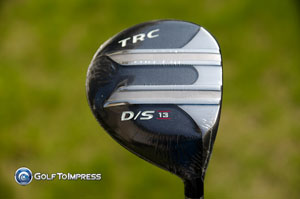 The other alternative is the new Royal Collection TRC Driving Spoon or D/S as they call it. Like the PRGR egg Spoon, its made for big distance with the difference that the D/S is very much like a mini driver at 224cc large. Its length at 43.75 is long for a fairway wood but short for a driver which makes it appealing to those who like short drivers and hit their fairway woods very well off the tee. The D/S I got is the 13* model with Tour AD F-65 Stiff shaft. As I mentioned its 4.75″ and weighs in at 325g. It’s swing weight is a bit higher at D2 but with a club this stiff and short, D2 should be okay. The design of the D/S and its larger head and deeper face make it almost a 1 dimensional type of club meaning its not very well designed to hit off the deck. Yes it features RC’s twin rail cavity to reduce friction but the deep face and length of the club make it far more suited for the tee box. Talking to customers, many who have gone for the D/S have done so as driver replacements with a few carrying both depending on their swing and trajectory needs. At 224cc the D/S still looks like an FW at address as it maintains a rather traditional shape. For me personally I think the D/S would be best at under 43″ but I think RC wanted to maximize distance as a driver replacement by setting the club up at 43.75″.
The other alternative is the new Royal Collection TRC Driving Spoon or D/S as they call it. Like the PRGR egg Spoon, its made for big distance with the difference that the D/S is very much like a mini driver at 224cc large. Its length at 43.75 is long for a fairway wood but short for a driver which makes it appealing to those who like short drivers and hit their fairway woods very well off the tee. The D/S I got is the 13* model with Tour AD F-65 Stiff shaft. As I mentioned its 4.75″ and weighs in at 325g. It’s swing weight is a bit higher at D2 but with a club this stiff and short, D2 should be okay. The design of the D/S and its larger head and deeper face make it almost a 1 dimensional type of club meaning its not very well designed to hit off the deck. Yes it features RC’s twin rail cavity to reduce friction but the deep face and length of the club make it far more suited for the tee box. Talking to customers, many who have gone for the D/S have done so as driver replacements with a few carrying both depending on their swing and trajectory needs. At 224cc the D/S still looks like an FW at address as it maintains a rather traditional shape. For me personally I think the D/S would be best at under 43″ but I think RC wanted to maximize distance as a driver replacement by setting the club up at 43.75″.
The right club + perfect impact
On narrow fairways or when you need to play it safe, there are many players who opt for the fairway wood off the tee regardless of whether or not they have issues with their driver. The FW, typically with its heavier weight and with its shorter length and shorter CG will create a more penetrating or stable trajectory. This is also one of the reasons why I opted for a 13* D/S instead of the lower lofted 11.5* D/S, the 13* off the tee would probably launch closer to a driver (typically 10 to 10.5*) for me while my guess is that the 11.5* might be too low. Drivers have very low and deep CG these days to maximize launch and carry but for the player who hits down on the ball too much this can be a distance killer. Excessive back spin makes the ball fly too high come back down too fast and provides no run at all. On a windy day as well a trajectory like that can lose 20-30 yards more. Now keep in mind while I do say this, usually longer clubs result in a flatter swing plane so again its about finding the right balance and getting the best smash factor. I had written a post nearly 2 years ago called Optimal Distance= The Right Club + Perfect Impact. In that post I compared JLPGA lady pros to amateur men golfers and the distance they were able to create with the driver with swing speeds being equal. PRGR’s Science Fit center had an average golfer swing up against Erina Hara a JLPGA pro and the results were as follows:
 The results only touch on the very surface and its evident the amateur cannot create the same smash factor the lady pro does since the back spin and launch are too high. Obviously he is not as good a player as Erina is but besides his swing flaws his own driver probably is not the optimal fit while pros play the top gear specifically built for their swings. None of us average golfers can expect to get the kind of impact a pro does however we can at least try!
The results only touch on the very surface and its evident the amateur cannot create the same smash factor the lady pro does since the back spin and launch are too high. Obviously he is not as good a player as Erina is but besides his swing flaws his own driver probably is not the optimal fit while pros play the top gear specifically built for their swings. None of us average golfers can expect to get the kind of impact a pro does however we can at least try!
It’s all about each individual…
I’ve rambled on quite a bit in this post but my point is, finding the right clubs for each individual and in the case of this heavier and stiffer experiment, the right clubs for me. By no means am I saying longer and lighter clubs and softer flexes are no good, it just depends on each player. Finding the clubs that will give you the optimal impact and smash factor require a lot of thinking, testing and on top of that we all need to practice too as no club will create miracles. Once again I hope these posts just makes readers think about their own swing and club choices and that it isn’t always as simple as grabbing a club off the shelf (though that may work for some lucky players). So this week I will test both the Legacy Aero at 44.5″ and the RC D/S at 43.75″ at Katsuura Country Club in south Chiba and see which one creates the best smash factor for me.
[poll id=”46″]


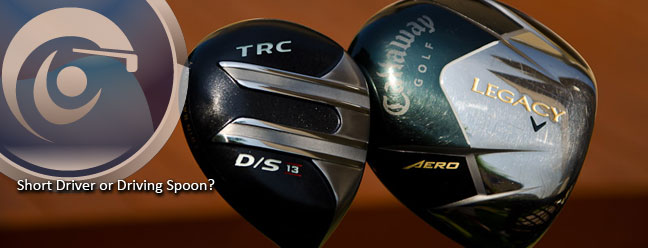
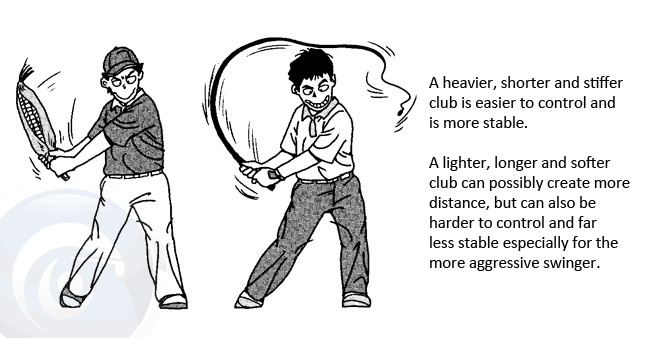
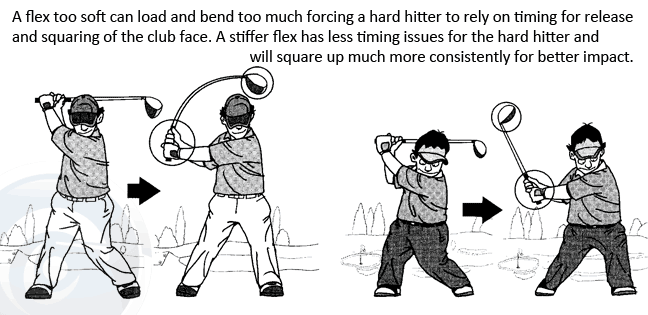
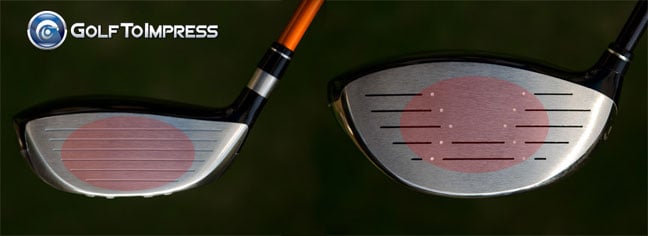
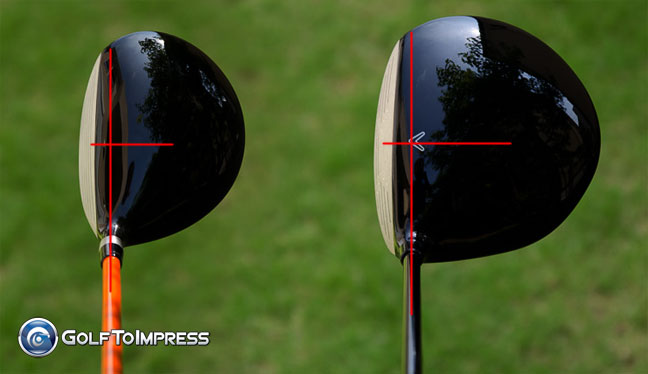
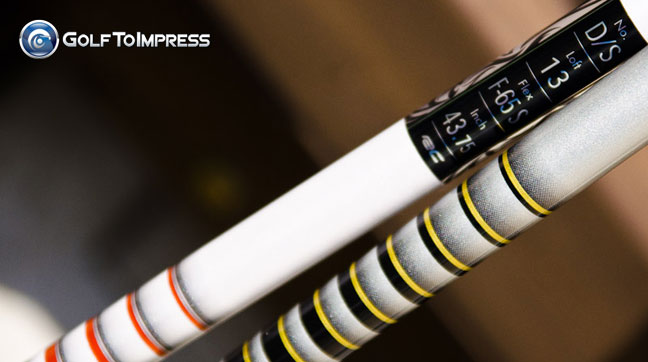










Great post gocchin, certainly makes you think. I’m still trying to figure out the right shafts for my swing and its not easy!
hi t
great post ..
iam a 3fw tee off man egg 15* fw80
Great blog post. I find that I have a lot more control with a stiff flex because my swing isnt as dependent on timing as it is with a regular flex. I may not hit the ball as high or are far but I definetly hit it straighter!
This is a great post. Not only did you cover the importance of increasing the smash factor by having a shorter driver length which is what we see on tour nowadays but also how important it is to have the correct shaft. It is amazing how having correctly fitted clubs can do for your game.
I really like your smash factor idea, from experience with my more aggressive golf swing, I have noticed that if there is just a tad bit too much flex that it does not feel as solid at impact compared to a good stiffness.
This I feel is very important as to how much control you want compared to how much distance you want. It’s similar to a give a take situation.
Hello “T”
Great posting! This is me to a tee! Maybe this is the solution to my driver and driving woes. My 3 hybrid has been working overtime due to the lack of cooperation from the big stick…anymore to report on the mini driver or the spoon experiment? Any more recommendations before I buy another driver? Thanks